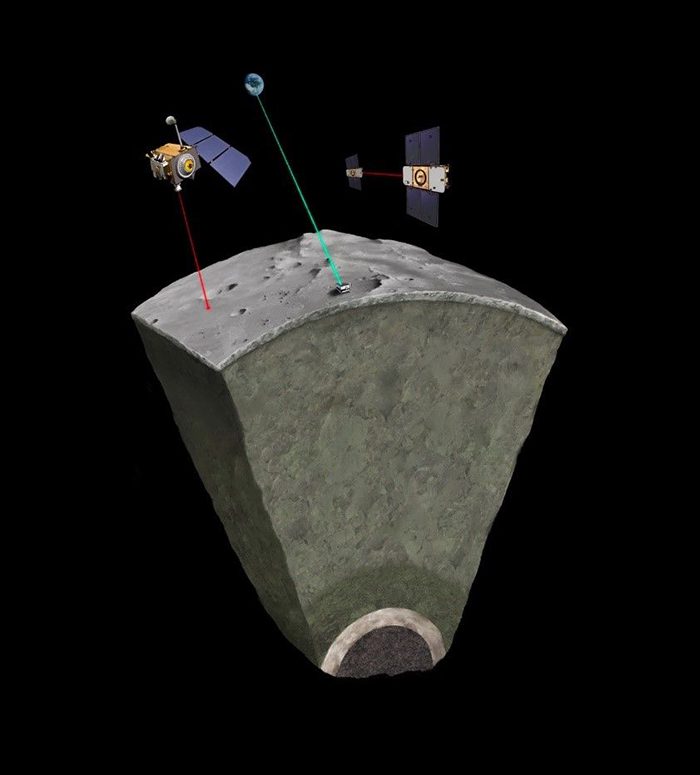Human exploration of the Moon brought some important instruments to the surface of our natural satellite: seismographs. Thanks to these, scientists discovered moonquakes, and those quakes have revealed much about what’s inside the Moon. Over the last two decades, it’s become clear that the Moon has a fluid core, but new modeling shows that there’s more to it than that. Inside that outer core, there is an inner solid core, like our planet’s.
The Apollo data could allow for a Moon with or without an inner core, so the team looked at models that could reproduce the physical properties of the Moon from its mass, how it rotates, and how tides deform it. This provided them with indications that there ought to be an inner solid core. The team estimates this inner core is about 500 kilometers (310 miles) across. And, it has a density lower than Earth’s own.

Artist’s impression of what a slice of the Moon might look like. Image credit: © Géoazur/Nicolas Sarter
But this is not the only intriguing insight the model delivered. The other major one is about a phenomenon called lunar mantle overturn. Simply speaking, this is the idea that material from the mantle, the thick middle layer between the thin crust and the outer core, moved around quite a bit.
Some elements, including iron-rich material, might have risen from the core-mantle boundary all the way to the surface, ending up in volcanic rocks that now make up the lunar crust. At the same time, parts of the crust that were denser than others sank through the mantle all the way down to the lunar core.
Understanding the internal properties of the Moon today gives us an insight into the past. Scientists believe that the Moon used to have an extremely powerful magnetic field, about 100 times stronger than Earth’s own. This was produced by the core. The magnetic field is now almost non-existent. Working out what the Moon’s like inside tells us why that might be the case and what else might have happened billions of years ago.
“Our results question the evolution of the Moon magnetic field thanks to its demonstration of the existence of the inner core and support a global mantle overturn scenario that brings substantial insights on the timeline of the lunar bombardment in the first billion years of the Solar System,” the authors wrote in their paper.
The study is published in the journal Nature.
Source Link: The Mysterious Interior Of The Moon Has Been Revealed At Last